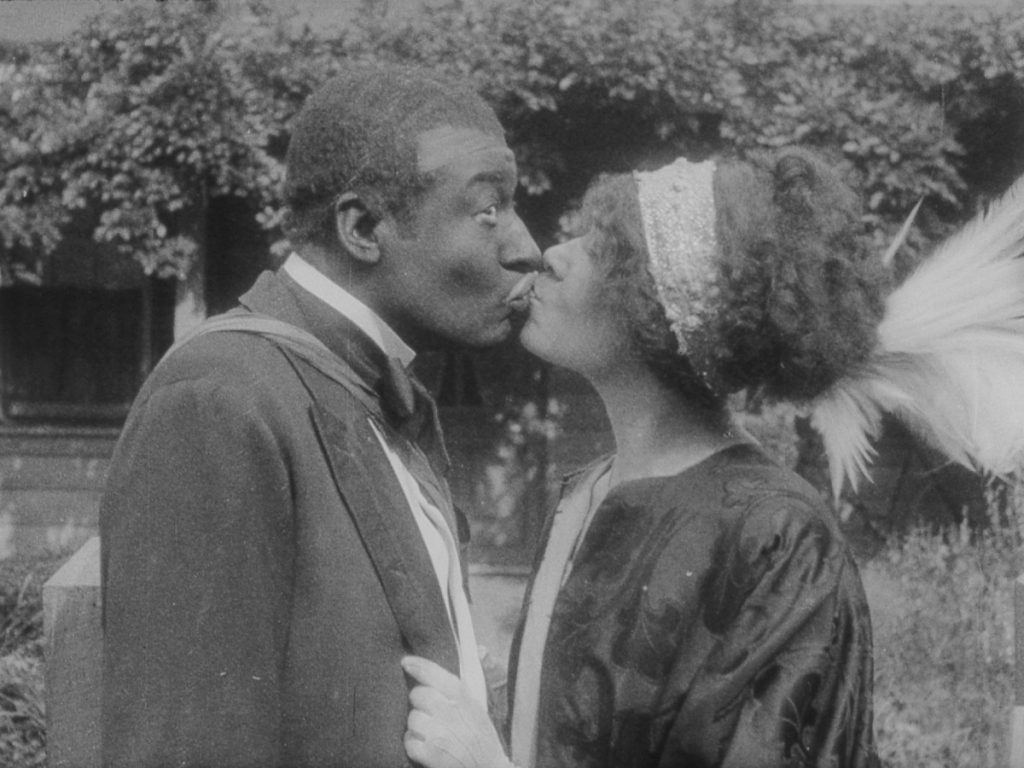Patrick Holzapfel
– „In the fall of 1913, a pioneering cast of African-American performers led by the famed Caribbean-American entertainer Bert Williams (1874–1922) gathered in the Bronx to make a feature-length motion picture. After shooting well over an hour of film, the project was abandoned by its white producers, who packed the footage away in unmarked cans, leaving no written record of its existence.“ (note from Ron Magliozzi, Associate Curator at the Department of Film at MoMa)
– The case of Lime Kiln Club Field Day (1913, Edwin Middleton, T. Hayes Hunter, Sam Corker Jr.) indicates how political the writing of film history is. I have never come across African-American filmmaking in the 1910s. Oscar Micheaux is probably the only name that would have come to mind before seeing this important piece of cultural history.

– However, films with black crews and stars were produced throughout the 1910s. In recent years, Alice Guy-Blaché the first female filmmaker widely recognised as such has finally received more attention. In her short A Fool and His Money (1912) she employed a black cast.
– The Brother Gardner’s Lime-Kiln Club was actually a fictional invention of a white writer and humorist, Charles Bertrand Lewis, better known by his pseudonym “M. Quad“. It can be found online under the title: “Brother Gardner’s Lime-Kiln Club : being the regular proceedings of the regular club for the last three years ; with some philosophy, considerable music, a few lectures, and a heap of advice wirth reading“
– The seven reels were first saved by Iris Barry, another unsung hero of this retrospective. After being dismissed in Great Britain for writing discerningly on Elinor Glyn’s film Knowing Men (1930) she moved to New York together with her husband. They struggled to survive when she became friends with Alfred Barr, Jr., director of the newly established Museum of Modern Art. She divorced and married John “Dick“ Abbott, a film enthusiast and with the help of Barr Jr. they started the Film Library of the Museum of Modern Art. She not only worked as a curator but also as an educator. In 1937 she started sessions of discussions between filmmakers and audiences. In 1938 she collected nine hundred Biograph negatives from the bankrupt’s studio’s vaults. Over the next thirty years the MoMa restored the films from the collection they could identify. They also discovered Lime Kiln Club Field Day and premiered it as an archival assembly in 2014.
– What we got to see is not a finished work of art but a work in progress. Some shots such as a humorous kissing scene (one of the first examples of intimacy between a black woman and black man on screen) are presented in different takes, between shots numbers are held into the camera…it is as the MoMa put it “a selection of multiple takes organized into a semblance of narrative order“.
– The “cakewalk“ scene with people presenting their dance moves in front of a giant cake is by far the most entertaining by modern standards. I especially enjoyed the sudden interruption by the couple which refuses to make any dance moves at all once it is their turn.
– It is rather shocking that even 105 years after the film premiered the casual images of middle-class life and adult relationships are not what we are used to see from black life in cinema, especially not from black life of that time.
– Nsenga Burton: „Why producers abandoned Lime Kiln Club Field Day remains a mystery. The footage shows black Americans actually pursuing life, liberty, and happiness at a time when they were denied basic dignities on a daily basis. That Williams brought this cast and crew together at this time in American history offers a refreshing glimpse of how performance and creativity can foster harmony even while living through some of this country’s worst times. Perhaps media scholar Cara Caddoo says it best in her recent book Envisioning Freedom, about race movies and black audiences: ’In short, both what we have lost and what we find are part of the longer history of American cinema.’ ”
More on Forever Film
Notes on Grauzone (1979, Fredi M. Murer)
Notes on Film and Reality (1942, Alberto Cavalcanti and Ernest Lindgren)
Notes on Yadanabon (1953, Tin Maung)
Notes on White Shadows in the South Seas (1928, W.S. Van Dyke, Robert J. Flaherty)
Notes on 30 Years of Motion Pictures (1927, Otto Nelson, Terry Ramsaye)
Notes on Sånt händer inte här (1950, Ingmar Bergman)
Notes on Valkoinen peura (1952, Erik Blomberg, Mirjami Kuosmanen)